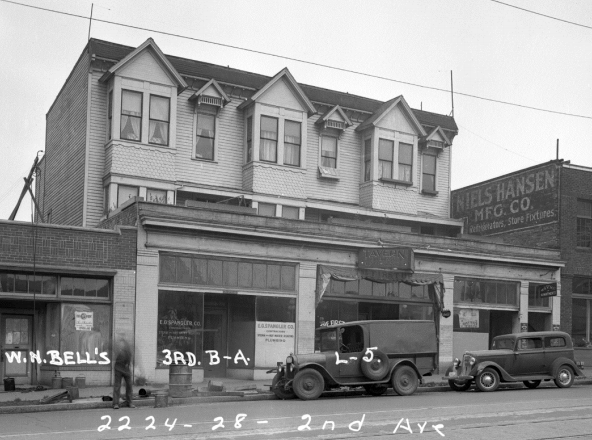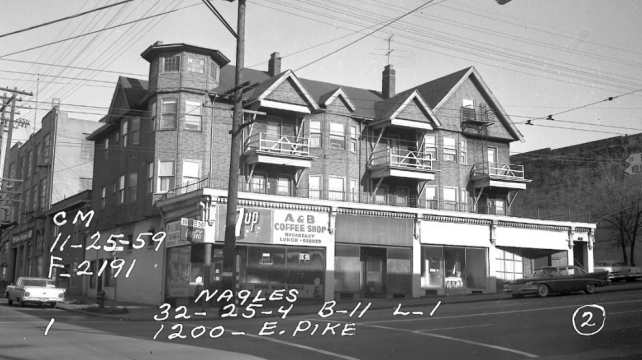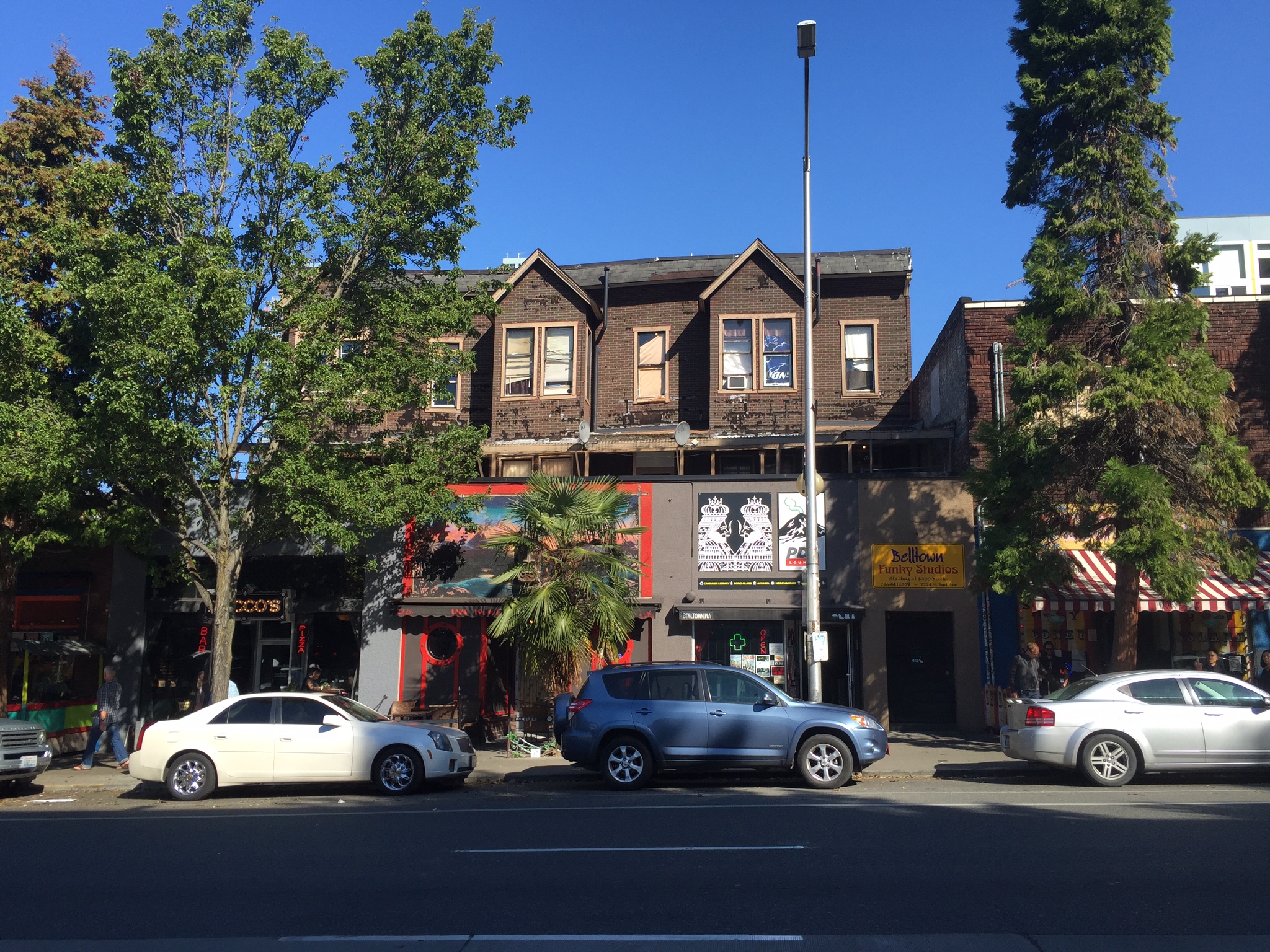Today the Seattle Landmarks Preservation Board will do what it does on a very regular basis: hear arguments regarding a local building or institution, and decide if that building should receive special protection from alteration or destruction. But today’s meeting will be very different from a normal one, because of one set of buildings on the agenda: the Wayne Apartments, at 2224 2nd Avenue, which contain on their ground floor level a very unique set of narrow storefronts. Far from even occupying the entire block, the building contains 7 restaurants and bars, including: Rocco’s Pizza, Shorty’s Pinball Bar, PDA Lounge (a medical marijuana dispensary), and Tula’s Jazz Club & Restaurant.
Due to the very high expected turnout, the meeting has been moved to the largest space for public meetings at City Hall: the Bertha Knight Landes Room. Belltown residents seeking to preserve a small corner of their neighborhood will likely come in large numbers. But the board will likely warn those seeking to provide public comment that the landmark board will not have any say over the uses of the buildings or the businesses contained therein. The board will only seek to determine if the building(s) are architecturally significant based on their own guidelines.

If the board finds in favor of the building, it will likely be through one of the more broad criteria on their list, such a criteria D-“It embodies the distinctive visible characteristics of an architectural style, or period, or of a method of construction”, or criteria F– “Because of its prominence of spatial location, contrasts of siting, age, or scale, it is an easily identifiable visual feature of its neighborhood or the City and contributes to the distinctive quality or identity of such neighborhood or the City. ” However, based upon past rulings of the landmark board, the Wayne is not on very solid footing here.
The Wayne Apartments are a pretty unusual architectural jumble. The oldest part of the structure are the rowhouses, now elevated above and behind the storefronts. These rowhouses date to 1888, very likely the oldest residential structures still remaining in Belltown. In 1911, a storefront level was added and the rowhouses raised up a level. In 2011, the landmark board declined to approve a building at 1200 E Pike Street as a landmark, another residential structure that had been raised up to allow construction of a storefront at street level. However, that vote was a tie, with 4 members of the board voting yes and 4 voting no. Much of the decision to grant landmark status on a building of this kind hinges on the integrity of the building, and how much the structure has been altered in its current state. The board will likely wade pretty deep into those matters tonight, with an anxious crowd watching the bated breath.

But regardless of the outcome tonight, a different question comes to my mind: is the preservation of this block a good urbanist choice? The block could clearly be much better utilized in terms of housing. Based upon current new construction in Belltown, a building in this location could rise relatively high with residential units, probably around 20 stories, and come with large ground floor retail spaces. Both the Alto Apartments at 3rd and Cedar and the Verve Apartments at 4th and Denny opened with large retail spaces, which are occupied by low-impact fitness studios, pilates and yoga respectively. Setting aside the question of whether or not Belltown has hit its yoga saturation point, there is essentially no way that a new building would come anywhere close to fitting the number of retail spaces that are currently sitting on the block of 2nd Avenue in question. Walking around Belltown, when I come upon the Shorty’s blocks, I cannot help but bring to mind Jane Jacobs: “Cities need old buildings so badly it is probably impossible for vigorous streets and districts to grow without them.”
Today feels like a clear juncture for Belltown’s next few decades, which is likely the reason for the large amount of public interest in what’s happening. A big weight rests on the landmark board’s shoulders. The meeting happens today at 3:30 PM in City Hall.
Ryan Packer has been writing for The Urbanist since 2015, and currently reports full-time as Contributing Editor. Their beats are transportation, land use, public space, traffic safety, and obscure community meetings. Packer has also reported for other regional outlets including BikePortland, Seattle Met, and PubliCola. They live in the Capitol Hill neighborhood of Seattle.




